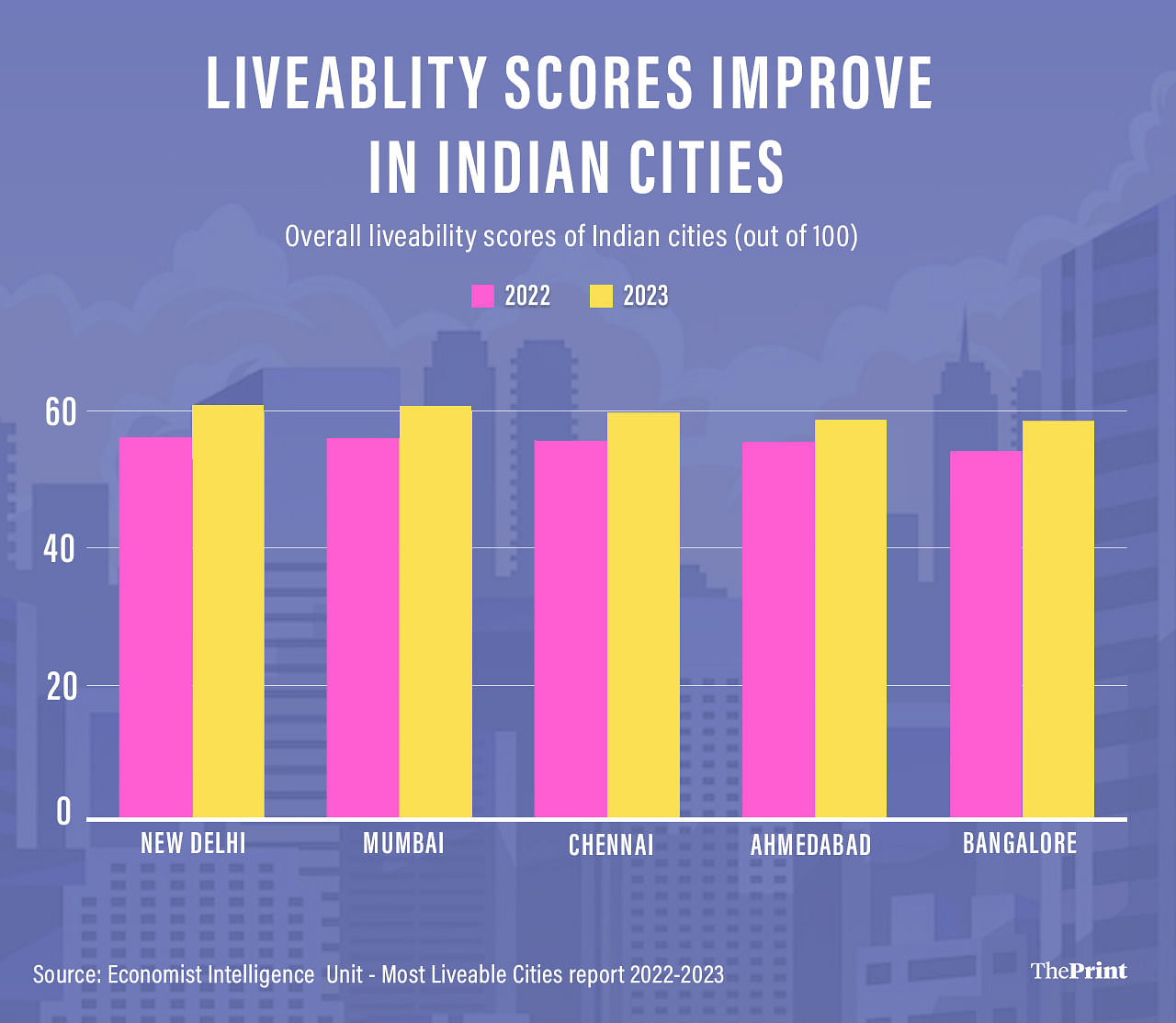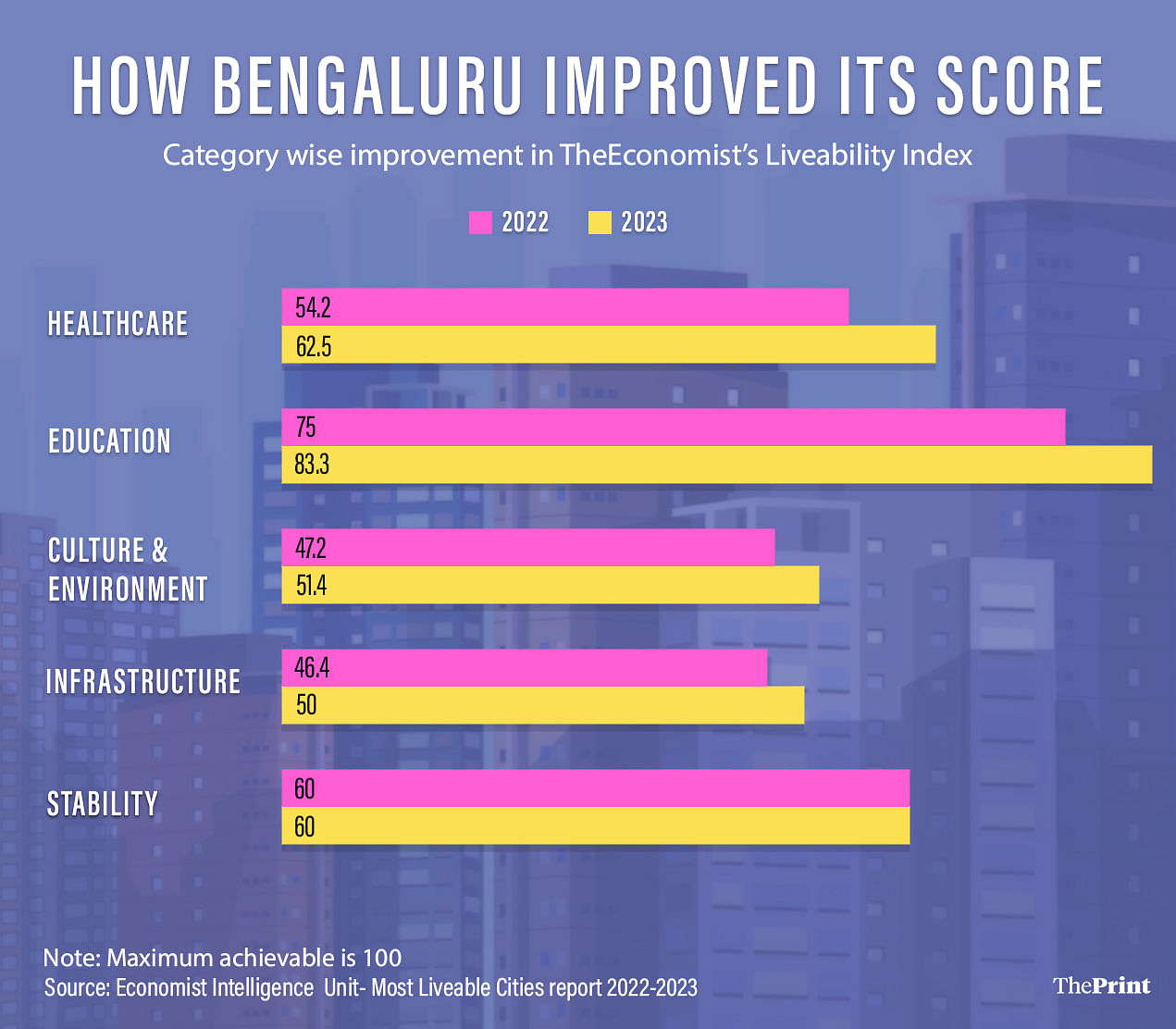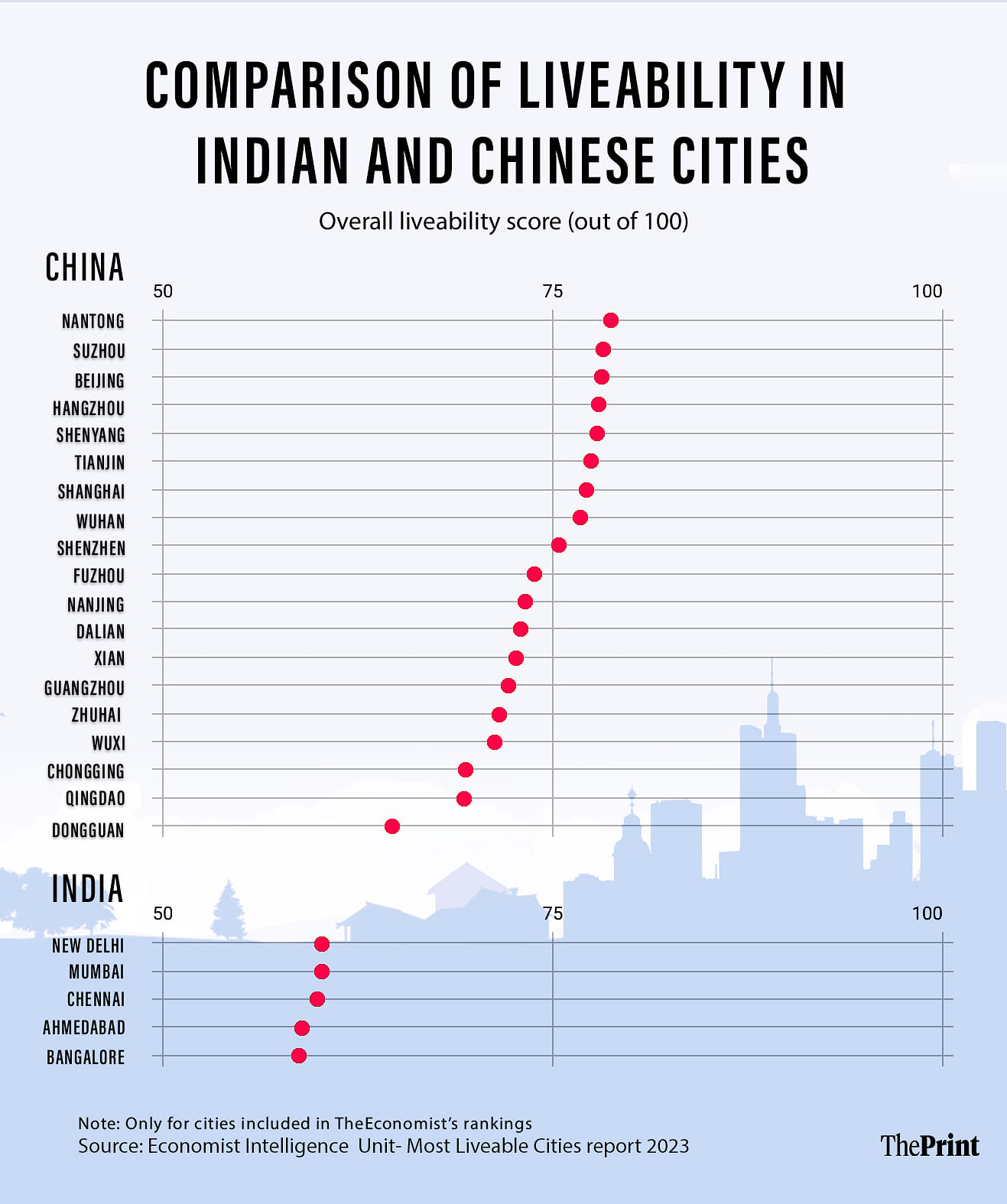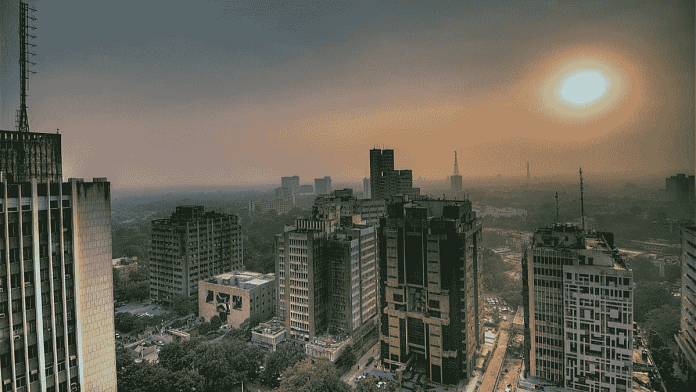New Delhi: Delhi and Mumbai may be the “most liveable” cities in India, according to the Economist Intelligence Unit’s (EIU) Global Liveability Index for 2023, but even they have miles to go before they can catch up with global standards.
According to the index released Thursday by the EIU — a global media and information services company which also publishes The Economist newspaper — both Delhi and Mumbai scored 60.2 on the index, sharing the 141st rank.
The index measures cities on five broad indicators — stability, culture and environment, healthcare, education and infrastructure. The highest score a city can get is 100.
While the annual liveability report only mentions the 10 best and worst performing cities, ThePrint could access detailed data on special request.
According to the index, Vienna emerged the most liveable city, with a score of 98.4.
Apart from Delhi and Mumbai, three other cities — Chennai, Ahmedabad, and Bengaluru — made it to the list of a total 173.
While Chennai scored 59.9 and ranked 144th, Ahmedabad ranked 147th with a score of 58.9 and Bengaluru’s 58.7 score secured it the 148th spot.

For Mumbai, the ranking remains unchanged from last year, although its score has improved slightly from 56.2 in 2022.
India’s capital, Delhi, which scored 56.2 last year, has also improved. Although it has dropped one place this year from the 140th rank it secured last year.
The most significant improvement was seen in Bengaluru. From being scored as the least liveable city in India last year with a score of 54.4, India’s IT city’s score improved by 4.3 points — the most for any Indian city — although its ranking dropped from 146th to 148th.
This was primarily due to improvements in other cities, an analysis of the rankings list shows.
In terms of improvements, Bengaluru is followed by Chennai, whose livability score improved by 4.1 points from last year.
The average improvement in livability scores in the Asia Pacific region — which India is a part of — was about 4.4 points (from 69.1 to 73.5), meaning that no Indian city outpaced the regional average.
The world’s least livable cities, according to the index, are Douala (Cameroon), Kyiv (Ukraine), Harare (Zimbabwe), Dhaka (Bangladesh), Port Moresby (Papua New Guinea), Karachi (Pakistan), Lagos (Nigeria), Algiers (Algeria), Tripoli (Libya), and Damascus (Syria).
How cities are scored
All five indicators in the EIU Liveability scores are further divided.
Stability is subdivided into five categories — prevalence of petty crime, prevalence of violent crime, threat of terror, threat of military conflict, threat of civil unrest/conflict.
Healthcare indicator is further subdivided into availability of private healthcare, quality of private healthcare, availability of public healthcare EIU rating quality of public healthcare, availability of over-the-counter drugs and general healthcare indicators.
The culture and environment indicator is based on nine sub-indicators — humidity/temperature rating, discomfort of climate to travellers, level of corruption, social or religious restrictions, level of censorship, sporting and cultural availability, food and drink, and consumer goods and services.
The last two indicators measure education and infrastructure. Education has been divided into three sub-indicators — availability of private education, quality of private education, and public education indicators.
The fifth indicator, infrastructure, is based on seven sub-indicators — quality of road network, public transport, international links, availability of good quality housing, energy provision, water provision, and telecommunications.
A score between 80 and 100 indicates the city has few challenges and 70-80 show that although there are challenges, they would be unlikely to affect day-to-day functioning.
Scores below this are on the lower spectrum, meaning that negative factors could have an impact in everyday life. A score between 50-60, for instance, means that such factors could significantly affect quality of life.
Last year, Bengaluru’s poor score was primarily attributed to its low ranking on infrastructure. Although its score has improved this year on that front — having gone to 50 this year from 46.4 — this was primarily because of better scores in two other indicators, health and education.

While the city’s score in education currently stands at 62.5, its score in healthcare stands at 83.3 — an 8.3-point improvement over last year.
Comparison with China
As expected, it’s developed countries that dominated the liveability index this year. Four of the top 10 cities this year — Austria’s Vienna (Score: 98.4), Denmark’s Copenhagen (98.0), and Switzerland’s Zurich (97.1) and Geneva (96.8) — were European.
Significantly, no US cities made it to the list of top 10.
For a fairer assessment of India’s performance, however, ThePrint accessed data on Chinese cities, especially since they are comparable to Indian ones in terms of population.

The EIU index has 19 Chinese cities, of which 10 are in the top 100.
China’s most liveable city, Nantong scored 78.7 and was ranked 82nd while capital Beijing — the country’s third most liveable city, according to the ranking — came close behind at 85th position, scoring 78.1.
Even China’s least liveable city, Dongguan, scored better than India’s best two — the city secured a score of 64.7, 15 paces ahead of Delhi.
(Edited by Uttara Ramaswamy)



